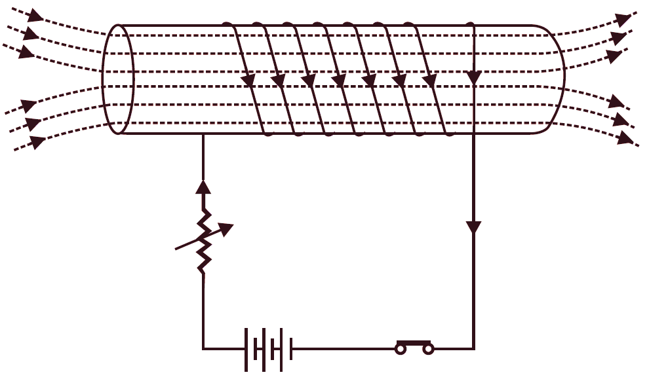In this topic, you study Self Inductance.
A coil (or a circuit) in which a change of current causes an emf of self induction to be induced within the coil itself is said to have self-inductance, or frequently, just inductance (Fig. 1).

Fig. 1: Self-inductance
Due to this self-inductance, when the current in the coil is increased, the self-induced e.m.f. in it will oppose this increase (Lenz’s law) by acting in the direction opposite to that of the applied e.m.f. Similarly, if the current is decreased, the self-induced e.m.f. will tend to keep the current at its original value by acting in the same direction as the applied e.m.f. Thus, any change in the current through the coil is opposed due to its self-inductance. Hence, self-inductance is sometimes analogously called electrical inertia or electromagnetic inertia.
The self inductance may, therefore, be defined as that property by virtue of which coil opposes any change in the current flowing through it.
FACTORS AFFECTING THE INDUCTANCE OF A COIL
The general expression of self inductance is
\[\text{L}=\frac{{{\text{N}}^{2}}}{\text{S}}….(1)\]
The Equation 1 clearly shows that the inductance is proportional to the square of the number of turns of the magnetizing coil and is inversely proportional to the reluctance. The reluctance in turn depends upon the dimensions of the coil (i.e. its length and the cross-sectional area) and the relative permeability of the surrounding medium. In this context, the following points are worth noting:
- Due to high relative permeability of iron, an iron-cored coil always has more inductance than similar air-cored coil (or coil with non-magnetic core).
- For air or other non-magnetic materials, relative permeability is always constant (μr = 1). Hence, the inductance of a coil with the core of air or other non-magnetic material is always constant and independent of the value of the current.
- In the case of an iron-cored coil, the relative permeability of iron is not constant but varies with the current due to saturation effect. As such, the inductance of a coil also varies with the current.
- The inductance being dependent on number of turns, the inductance of a coil is greater than the inductance of a straight conductor of the same length.
- If the conductor is bent back on itself, the field due to the current flowing in one direction neutralizes that due to current flowing in opposite direction. Hence, the inductance is zero under such condition.